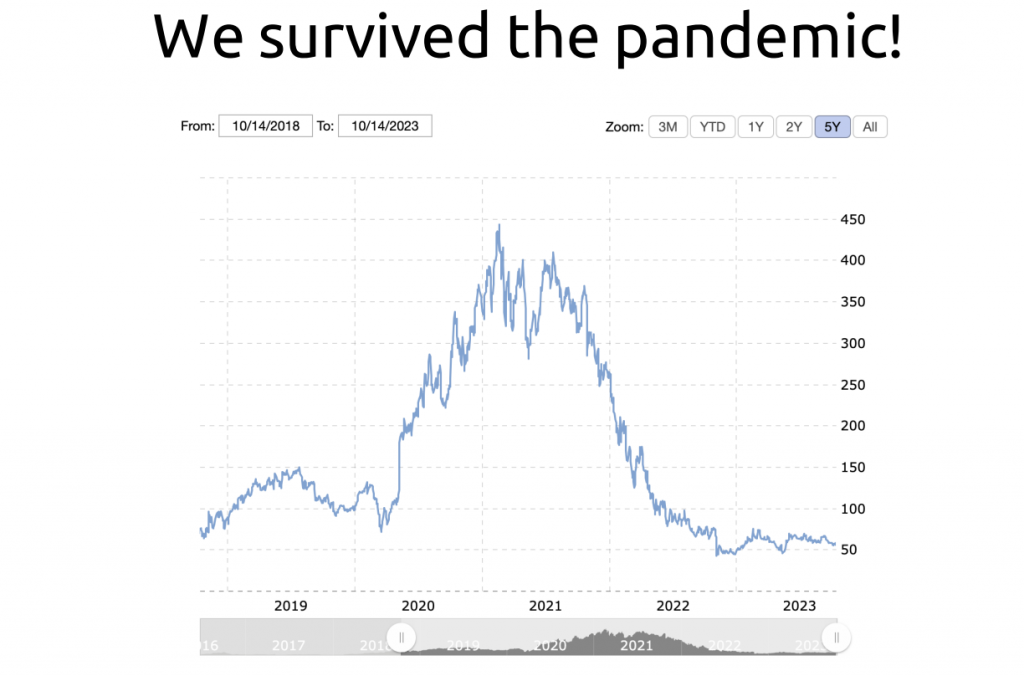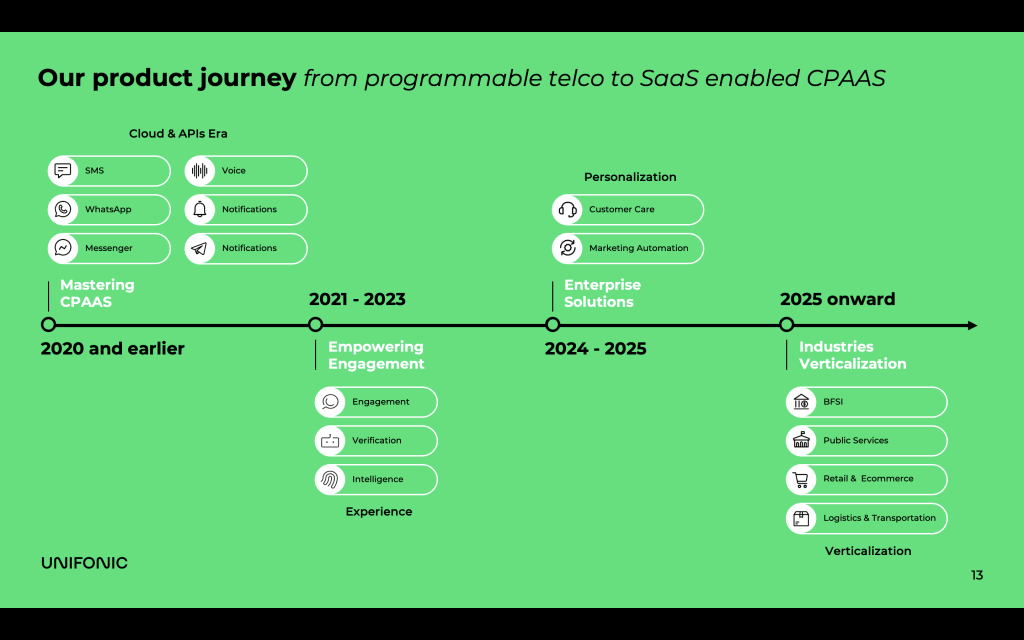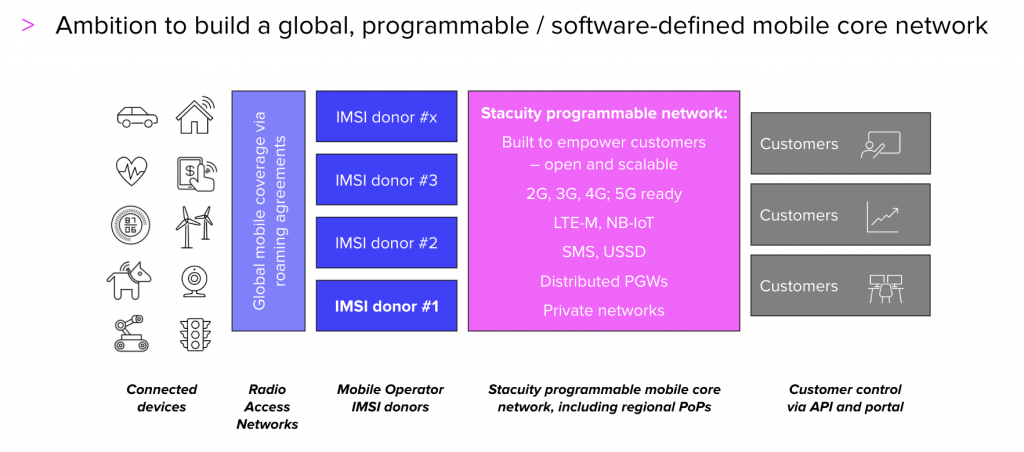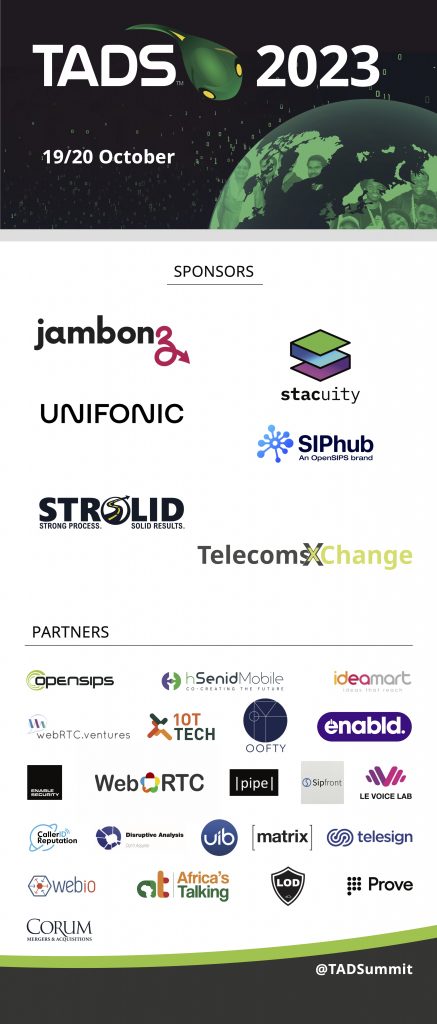We wrapped up TADSummit on Friday 20th October, and then jumped straight into TADHack Global. The TADHack results were announced on Monday 23th, and presented at Network X on Tuesday 24th in a broader review of TADHack over the past 10 years.
A delayed flight home on the 25th while watching the second half of ‘The Last of Us’, reconnecting with family, then in the evening falling asleep on the couch while my wife played Civilization Revolution.
Today has been catching up, and contacting all the TADHack winners with about 75% of them receiving their prize money. And kicking off this TADSummit 2023 review. This post will focus on the keynotes, and link to subsequent TADSummit reviews across all the content.
This post focused on the Keynotes.
This link focuses on the Free and Open Source Software section
This link focuses on the Enterprise and LLM sections
I’ll add more links as I review all the content.
TADSummit kicked off with a ‘Welcome to the Capgemini 5G Lab’ from Patrice Crutel, Technology & Platform strategy Director at Capgemini Invent. Here’s the Video. Patrice has been part of TADSummit for many years, through his years at Bouygues and Capgemini, here’s one of his TADSummit presentations from 2017. Thank you Patrice for hosting TADSummit.
Welcome to TADSummit, Alan Quayle
I gave a ‘filler’ Welcome presentation, to ensure most people had arrived before the keynotes got underway. Here are the Video and Slides. I thanked the sponsors (Strolid, Stacuity, Unifonic, SIPhub, Jambonz, and TelecomsXchange) and many partners for making TADSummit possible, and got down to the meat of why people attend TADSummit, it’s our no-BS policy.
I see all the book clubs pretending to represent their members, while not doing anything other than repeating vendor marketing and demonstrating little understanding the reality facing our industry. TADSummit gives a practice based understanding of what’s working across technology, services, go to market, and where things are going in programmable communications. We have a 10 year track record of being closer than most.
The crux of the problem is the graph below, Twilio’s stock price. Ignore people claiming $100B revenue predictions for the CPaaS industry, they simply have no clue on the reality of what’s happening. In 2021 the carriers became rather jealous of Twilio’s inflated stock price, thanks in part to effective media manipulation (cough Mad Money cough). Its taken 2 years but the carriers have arranged the US messaging monopolies to take a heavy toll on the A2P industry with 0.5c per SMS and numerous spurious changes, yet the old-boys network are exempt from them.

Looking more broadly across the world, carriers move in as business models mature, just like Microsoft does for apps on its platforms:
- Cherry-picking large wholesale accounts (e.g. Facebook and Google)
- 10DLC in the US
- Messaging Monopolies, https://alanquayle.com/2023/09/messaging-monopolies/
- All the fair-share claims
In the limit carriers are accelerating the transition to IP messaging for small and medium sized businesses However, the programmable communications industry will always remain in the lead because they can innovate faster, focus faster, control their roadmaps, and are the real techcos in telecoms. With for example:
- Real Time Video (WebRTC) & AI
- Conversations & AI
- Developer / customer centric
- Listen to the customer and solve their problems in days/weeks
- Customize / own their roadmap
- Mash-up web, telecoms, and best of breed. Be part of a solution, not THE solution.
- Not trapped in the telecom echo chamber – GSMA, MEF, MWC, CTIA, legacy vendors, etc.
Elevating CX Using Modern CPaaS / Programmable Communications. Karim Zaki, Unifonic
Slides can be downloaded here.
It’s great Karim is back at TADSummit, he last presented at TADSummit in 2018, with an insightful presentation showcasing an industry leading platform. Karim made me realized the Middle East market is several steps head of other markets in the transition away from aggregation of commoditized comms (CPaaS), rather delivering business workflows that can be rapidly adopted across a range of verticals.
In 2022 Unifonic bought Sestek, conversational AI and analytics solutions for customer service since 2000. I was interested to see what had emerged from that acquisition and how they were taking it to market.
Unifonic has raised $150M, has 500+ employees and has over 1B transactions per month. Karim directly addressed the question on whether CPaaS is declining or evolving. Clearly it’s the evolution to conversations, that we’ve covered at TADHack for 8+ years. And of important note, those conversations are often over WhatApp.
Karim highlights the 3 aspects of that evolution in chatbots, personalization and analytics. A critical aspect of Unifonc’s success here is no-code, so enterprises can set up specific workflows to test out a solution, see it works, and move to production. No code is not just about a easy route for developers, it’s also a sales tool so product management / technology / operations can prove a solution and buy it.
To accelerate the sales cycle pre-built suites are created across channels, engagement, verification, and intelligence. I really like the roadmap Karim shared, CPaaS is so 2010s, the focus is on engagement, personalization and industry focus. This is the template for the programmable communications industry.

Karim then shared a review of the Middle East market, its diversity and the moats Unifonic have built across the region. They are quite a gem, and perhap could be an aggregation point across the industry. Karim wraps up with some quantified use cases that demonstrate Unifonic’s leadership.
Beyond the IoT – programmable connectivity for the digital enterprise. Mike Bromwich & Tim Dowling
Slides can be downloaded here.
Stacuity had an impressive TADHack Global 2023, many of the hacks used the security and key value store features to solve real world problems. I’ll cover them on the TADHack weblog soon, you can see the Stacuity winners here.
Tim tested positive for COVID the day of travel, so ended up giving a remote part of the presentation.
The then and now comparison between Stacuity’s 2022 and 2023 presentations is impressive. They described their plan in 2022 and delivered on that plan in 2023, and are now witnessing developers engage using the unique features Stacuity offers.
Before Stacuity, IoT was simply a SIM resell, and was over hyped by the legacy vendors, remember Ericsson’s 50B IoT claim by 2020. I really wish the industry would remember the litany of overstatement from legacy vendors’ marketing, and appropriately invest based on their track record.
Stacuity brings the real-time visibility and flexible control, which customers enjoy with cloud services to the mobile network. Their solution includes:
- Innovative, programmable / software-defined mobile core network
- To democratise the control of mobile connectivity, on a global basis
- So that connectivity providers and end customers, of any size
- Can manage mobile connectivity with the agility and cost-efficiency associated with public cloud services

Some of their self-service features include:
- Self-serve virtual private slices of connectivity per SIM (2G-5G)
- Self-serve VPNs per SIM in seconds
- Policy-defined access controls and routing rules
- Real-time packet tracing and Wireshark capture (for troubleshooting)
- Browser-embedded remote access
- Network event integration and webhooks
- Network operator roaming policies per SIM
Their progress since 2022 is impressive:
- Now launched – Jersey Telecom as 1st IMSI donor; roaming in 150+ countries
- Customers trialling services – MVNOs, solution providers, developers
- Sponsoring TADHack 2023 – SIMs sent around the world
- Launching USA and Singapore PoPs soon; integrated with Equinix (and Comfone)
- Preparing to onboard new IMSI donors
- Testing, learning, iterating…on the path to product x market fit
Simply, they enable the mobile network to be treated like an extension of the enterprise network. The reason WiFi in the enterprise is so successful is it’s not a silo, it’s an extension of the enterprise’s corporate network. Stacuity is enabling the same approach for their global mobile network of SIMs.
How TelecomsXChange is Transforming the CSP’s Wholesale Business. Ameed Jamous.
Slides can be downloaded here.
The previous week Ameed and I presented at a MEF session on , ‘The Future is Cloudy: Cloudification of Wholesale Telecom‘ run by Isabelle Paradis. This was a taster for the in-depth review Ameed provided at TADSummit. Ameed also did a TADSummit Innovators podcast a few weeks ago.
Telin, is the international arm of Telkom Indonesia, delivering
wholesale voice, SMS, and numbers business using TCXC’s PaaS (Platform as a Service). This platform enables telecom carriers to consolidate voice, SMS and phone numbers onto a single platform, and through its automation of APIs, allow for partners and customers to programmatically purchase and consume these services. Telin is even reselling TCXC’s PaaS! Helping other telcos modernize and lower the cost of operations of wholesale services.
While the telco industry talks about Techco, without a clear understanding of what is required. Simply, a Telco must own their roadmap using open source, that is, move away from their closed source legacy vendors. As I mentioned in the MEF session Ameed and I attended. And TCXC has delivered the Techco vision for wholesale, building on many open source projects to deliver a source free platform. That either the Telco can operate or TCXC can operate on behalf of the telco.
Ameed wrapped up looking at where he’s taking his PaaS. I remain shocked most rate sheets are shared by emails of Excel spreadsheets. Today all that data can be made available online, so you can find the route with the price/QoS required. In fact the sheets should be dynamic based on current demand. The spot trading vision of wholesale is within grasp, and TCXC has created the PaaS to make that possible. Watch this space!
How the open source project Jambonz is disrupting CPaaS. Plus – these are the mistakes I’ve made. Dave Horton
Slides can be downloaded here.
Dave always gives a fun and frank presentation. His style embodies the no BS ethos of TADSummit. You can see more of Dave on the TADSummit Podcast. We also had some fun at the expense of silly market sizes, $100B, produced by some of the book clubs.
Dave sets out how over the past 15 years, the barriers to programmable voice have diminished, resulting in the time being right for Jambonz. The winning features for Jambonz are:
- Run anywhere
- Bring your own everything
- Data privacy as a core design principle
- Pack it with your own innovations
Dave reviewed some of the key decisions he’s made over the years with Jambonz.
Choosing the MIT license. The MIT license permits the use, copy, modify, merge publish, distribute, sublicense and sell copies of the software. Some notable projects use the MIT License including Ruby on Rails. It’s the license that avoids you being held hostage in the future.
Listening to customers, not pundits. So true! Dave used the example of the SMS API he built at a pundits suggestion, that has not been used.
Investing in a hosted SaaS as a loss leader. So developers can start playing with the software as fast as possible.
Implementing a retainer-based support model. Ensure the focus is on the big stuff.
A community = license + culture:
- Jambonz culture: the software is free, but everyone is expected to
contribute – w/ a broad definition of what it means to contribute - Everyone must care about making the software better
- Newcomers get a free lunch — then have to work
I’m going to name names, Amazon and Twilio both use open source projects and use the big company excuse of ‘we’re so big we’re incompetent’. This is BS, just like you tip for service after a meal, everyone should tip for using open source. For the small companies with time, code, and documentation, and for the big guys with cash. We need to maintain a name and shame list of companies using and not contributing to open source projects. Open source made programmable communications / telecoms possible and we all need to give back.
Pay attention to your attention – focus on the big stuff, not the minor issues.
Get comfortable being “unsafe at any speed.” It enables massive progress with a very small team (2 people).
The Symbiosis of Open Source and Industry or how they do self-support one each other – study case of OpenSIPS and SIPhub. Bogdan-Andrei Iancu.
Slides can be downloaded here.
Having Dave and Bogdan presenting back to back really set up the challenges open source projects face, and their efforts to improve monetization. While often project specific, I think Dave and Bogdan’s work here is important for the health of free and open source telecom projects.
The microphone battery ran out for about 5 minutes of Bogdan’s presentation, of course, while I was out of the room. He’s going to re-record the audio, and I’ll dub it over. We’re also going to have Bogdan on the TADSummit Podcast on Friday 3rd Nov, to discuss his presentation in more detail.
Bogdan highlights the dichotamy FOSS projects face in living around the “sharing” and “community” concepts:
Sharing the work results
Sharing the costs/resources
..or..
Delivering
Being supported
In the limit a large FOSS is like a small companies with costs and deliverables, hence needs regular stable income.
Bogdan divided the FOSS development into 2 stages. First, is where it’s more than just some code, there are many wrappers and tasks required:
Reliability – 10 years of continuous activity
Predictable – one major release per year, minors
Community support – mailing lists, trackers
Open to ideas and contributions
Security audit
Yearly OpenSIPS Summit conference
Driven by the “industry needs”
The second stage is where the project is mature and implementation knowledge becomes the critical assets. Hence the emergence of SIPhub.
Is the “industry” face of the OpenSIPS project
Wraps OpenSIPS into Industry fitting solutions
Brings ideas, code and traction into the project
Addresses the OpenSIPS’s resources
Bogdan introduced the concept of the SIP Engines, see below, the atomic units of SIPhub. I think this a great way of productizing OpenSIPs that makes the knowledge sale linked to a product investment, and hence fundable by clients. I’m going to watch SIPhub closely to understand what works and how others can follow Bogdan’s lead.
Grooving on using vCons to feed data engineering pipelines, machine learning, and analysis. Thomas Howe.
Slides can be downloaded here.
Everything is coming together on vCons, the standard, the data sets, and developers able to slice / dice the data and use bots to automate many workflows around customer and employee communications. the big-data vision around conversations is now happening.
Unfortunately Thomas was ill the week before TADSummit, there was no way he could make the trip out to Paris without making himself even more ill. Last year we managed to have Thomas in person for the first day of TADSummit, but he was ill for the second day. To minimize all risks Thomas gave a pre-recorded presentation.
Thomas introduced the Conserver: a vCon native AI Framework that extracts conversations from systems, prepares them for consumption through transcription or redaction, and exposes them as open and standard data sources, see below, as well as the full technology stack.
Below are a few screenshots of have the STROLID TADHack winner used vCons to understand the company’s customer conversations over one day, and automate a workflow all from a Jupyter notebook. This is an exciting time for STROLID and vCons, it’s now time to engage enterprises in reaping the benefits of this technology.
A2P Messaging Masterclass, Giovanni (Johnny) Tarone & Bill Peters
Bill and Johnny bring an unmatched depth and breadth of experience in programmable communications. They are available for anyone in the TADS ecosystem who seeks advice, help or support. Especially in entering or growing your position in the US market, it’s about 50% of the programmable comms industry.
We’ve exposed the problems with the US messaging ecosystem with these posts:
- Major William Peters, Plaintiff, versus Kaleyra, Defendant. Part 1;
- Messaging Monopolies;
- Understanding TCR and Kaleyra Part 2
- Understanding TCR and Kaleyra Part 1
Tata Communications has bought Kaleyra, and continues with the same pattern of delays in arbitration with Bill Peters. I covered how Tata is now using the customer data in the TCR to encourage aggregator customers to its platform. The TCR owner can not be an aggregator. I’ve had a few people let me know they received the message in that post. Even Twilio is highlighting to analysts the TCR is impacting their revenues.
I was talking to one of the founders of an early programmable communications company, who has been working in another industry, and he was shocked at how difficult outbound SMS has become, so they gave up with that part of their hack. He was copying something similar to the TADHack winner Dreamages, see all the TADHack winners here.
Thank you to the sponsors Strolid, Stacuity, Unifonic, SIPhub, Jambonz, and TelecomsXchange for making TADSummit possible. While the legacy aggregation business has its challenges, the programmable communications / telecoms business is exceptionally bright. As we’ll see in the rest of the presentations given at TADSummit, and reviewed / linked from this post.





7 thoughts on “TADSummit 2023 Review”
Comments are closed.